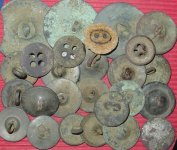MiddenMonster
Bronze Member
On the surface this story sounds good. Gold coins were found in Great Britain, reported and presumably the finder got a fair value for them. The system worked. Now they are going to be auctioned off. This is where it gets fishy. The gold coins, up to four of them, were found just over two years ago near the battlefield where Richard III was killed by Henry Tudor. The finder notified both the British Museum and the "Portable Antiquities Scheme". Auction value of the coins is in the $25,000 range. The article doesn't state what those two entities decided, but I can't imagine gold coins found in proximity in time and space to the battle where a king was killed by the guy who fired up the next British dynasty being anything but treasure! Both in monetary value and cultural value. You'd think these would be in some kind of museum...run by the British. So why are these coins being auctioned, and who currently has ownership of them? Did the British Museum and Portable Antiquities Scheme declare them to be treasure and pay the finder the government approved amount? And if they sell for more than what the finder was paid, does he/she get to pocket the increase? Maybe I've seen too many episodes of the Rockford Files, but this sounds like a scam to me: A finder is paid a pittance that the government declares is "fair", then when the heat's off the government auctions off the items for more than they paid for them.
Gold coins from 15th century found near Richard III battlefield are going up for auction
There's also some cool pics of these coins. Nothing like gold to retain a shine...
Gold coins from 15th century found near Richard III battlefield are going up for auction
There's also some cool pics of these coins. Nothing like gold to retain a shine...



